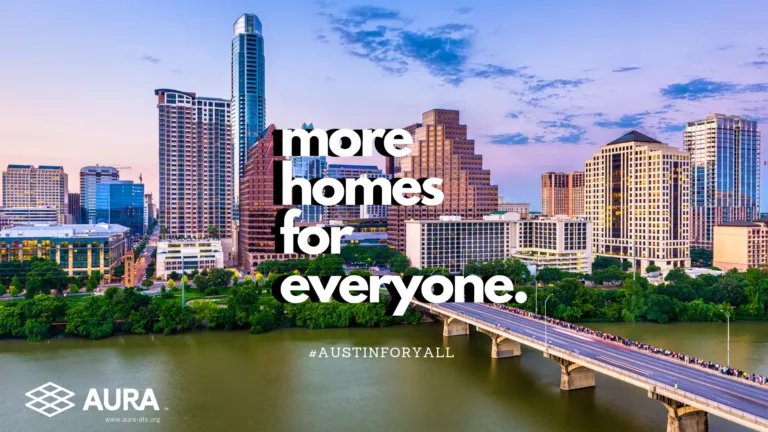
On October 5th, the day after the release of the first draft of the Land Development Code, over 50 AURA members and allies met to read through the code and provided code-level comments.
You can see all of those comments, organized by categories and tag on our website here.
We’ve also created an annotated PDF version of the code with the same comments inline here.
Finally, you’ll find both a summary and the details of the criteria for each zone here.
Note: the website and PDF comments are interlinked so you can click on a page number on the website to open the comment in the PDF or click on the footnote in the PDF to open the comment on the website.
Below is a summary of our most important findings. We look forward to working with staff and the City Council going forward to create a pass the best possible code we can so we can make Austin more affordable, environmentally sustainable, with opportunities that are open to everyone.
The Good and Great
We’re excited to see zoning for mid-scale residential housing like 4-plexes and 8-plexes near Enfield, 45th, and elsewhere in West and central Austin. These are high opportunity areas with short commute times to downtown and other job centers that have been excluded from more affordable housing development for too long. Council’s direction called for wider transition zones in areas like these that are not vulnerable to displacement, and we’re happy to see that reflected on the map.
We’re excited that the proposed code text would generally make ADUs easier to build in more places and in more ways. As discussed in the Obama administration’s Housing Development Toolkit, ADUs help remedy a number of housing needs including providing more affordable housing in every neighborhood, providing tax relief through rentals options, and helping “address the needs of families pulled between caring for their children and their aging parents, a demographic that has been growing rapidly in recent years”. Allowing ADUs in almost all of Austin will fulfill the council’s goal of adding all kinds of homes, for all kinds of people, in all parts of town.
We’re excited that duplexes are allowed to be larger than single-family homes in Residential House-Scale zones (because duplexes are allowed more floor area ratio [FAR]). This will provide a much-needed incentive to build more homes instead of just larger ones. Under the current code, even on lots where two units are allowed, too often we see demolitions result in only a larger single-family home being built instead of two homes. The increased FAR for duplexes will help mitigate that.
Strong Potential
Limited Site Plans are a great idea, but their usefulness will come down to the details. More work and more reform may be needed to make Missing Middle projects easier to build.
We’re hopeful for the preservation bonus — we love the idea in principle. We’re eager to see testing to evaluate its feasibility on the ground.
Needs to Change
Minimum lot sizes in Residential House-Scale zones are reduced slightly, but still enormous at 5,000 square feet. AURA has long called for eliminating minimum lot sizes entirely, and we will continue to do so. It is crucially important that we at least reduce them by half or more in this revision if we want to become a more affordable and equitable city.
Minimum lot sizes serve no other function than to make neighborhoods more expensive (See The Color of Law: A Forgotten History of How Our Government Segregated America by Richard Rothstein). They are big a reason why Austin is among the most segregated city in America by race and income.
Council direction to staff recommended reducing minimum lot sizes “to achieve the goals elsewhere in this document”. While the current draft nominally follows this guidance, it is our firm belief that it needs to taken significantly farther.






